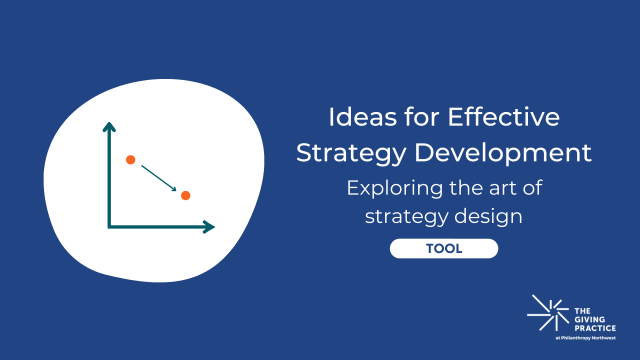Philanthropy Northwest is pleased to share this conversation about the dynamic, blended and complicated process called foundation governance. Existing at the confluence of mission, money and compliance, governance requires philanthropic leaders to make decisions and trade-offs with less than perfect information.
It’s a fact: the nation’s 85,000 foundations depend on investment performance over time to marshal resources to build resilient, equitable and inclusive communities. Many expect to operate in perpetuity. Nearly six years after the market bottomed out in March 2009, we continue to live with the repercussions of that global trauma. Broadly, poverty and inequality have reasserted themselves in unprecedented ways. Despite several years of market recovery, subsequent index records and renewed investor optimism, giving by foundations has not yet returned to pre-recession, inflation-adjusted levels. Meanwhile, the investment environment is marked by increasing volatility and falling expected returns. In short, the complexity of providing fiduciary oversight and governance for foundations that aspire both to current impact and perpetual existence can easily outstrip even an experienced board’s expertise and capacity.
Two weeks ago, we hosted a regional conversation with Alan Biller, founder of Philanthropy Northwest member Alan Biller & Associates, an investment consultancy responsible for managing more than $80 billion across all asset classes. Given his role as the fiduciary for his firm’s clients, he brings deep insight to the current dilemmas that philanthropic fiduciaries face. I sat down with Alan to summarize the main points of his presentation:
Jeff Clarke: Consensus estimates point to a low investment return environment for the foreseeable future. How do endowment and foundation investors improve their investment results?
Alan Biller: There are only three generic ways, all of which involve taking additional risk: increase international exposure, increase investment in less efficient markets (generally illiquid ones like private debt and equity) and use leverage either across the board (which we don't recommend) or within individual strategies (e.g., risk parity).
Given the spending requirements for not-for-profit investors, what is the appropriate level of liquidity an investment portfolio should maintain?
There isn't a single answer. Since in a down market distributions from illiquid investments may diminish if not actually dry up, the minimum is the amount needed to fund all commitments for several years. Beyond that level the issue is how much impairment of the liquid portion of the portfolio the board can tolerate.
Why have smaller endowment and foundations underperformed their larger counterparts?
Though individual cases will differ, the aggregate data strongly suggests that it is because they have under diversified, especially into alternatives.
What are the challenges associates with investing in alternative asset classes?
Limited in house resources to identify good managers/funds and perform due diligence, and limited access because of size and lack of relationships.
Given private equity and real estate have outperformed in recent history, what are effective ways for smaller endowments and foundations to participate?
The simplest way is to invest via commingled funds. However, not all of them are really very good. Qualifying them requires due diligence. Thus the threshold issue is whether the smaller endowments and foundations have the necessary in house resources to do it. If they don't then they should carefully consider outside advisors.
Any closing thoughts?
At the end of the day, seemingly small return performance differences over time have tremendous long-term implications for the future of a foundation.
The attached session presentation offers a compelling visualization of the investment environment and trends.


